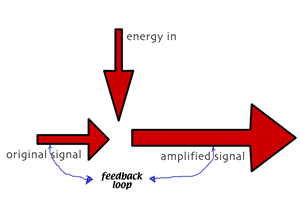[C]urrently espoused, ecosystem management is a magical theory (see Ludwig 1993) that promises the impossible — that we can have our cake and eat it too. Worse, however, it addresses only the symptoms of the problem and not the problem itself. The problem is not how to maintain current levels of resource output while also maintaining ecosystem integrity; the problem is how to control population growth and constrain resource consumption. And the solution to the problem is not anthropocentric-based ecosystem management, it is rejection of the doctrine of final causes. Humanity must begin to view itself as part of nature rather than the master of nature. It must reject the belief that nature is ours to use and control. Once this is accomplished, we can accept that the land has limits, and that to live within those limits we must halt population growth and reduce consumption. I believe this rejection of the doctrine of final causes is at the very heart of the biocentric view of ecosystem management (see Noss & Cooperrider 1994). Unfortunately, the “seismic shift” in the mindset of humans (Grumbine 1994) required by this
view of ecosystem management may never occur and, if it does, it will be a slow process that may come too late.
Stanley, T.R., 1995. Ecosystem Management and the Arrogance of Humanism. Conservation Biology, 9(2), pp.255–262.


 The latch handles on both the driver- and passenger-side door are broken. There is a certain geometry on the plastic lever-arm which, over time of repeated lifting motions, fails. So I have to replace them. The truck is relatively old, compared to the average age of vehicles on the road. I call the Toyota dealer nearby, and they want almost USD100 for each replacement handle. This is called an OEM part — Original Equipment Manufactured — a part which carries some of the branded weight of the maker and its record of quality along with a premium price (including a substantial markup to underwrite the existence of the dealer distribution system). Too much! I knew this would be the case before I called, but I wanted to set a ceiling price before looking elsewhere, online. This particular vehicle model was globally a widely-distributed frame, body, and engine combination and so there turns out to be a substantial non-OEM parts market. The only question is one of quality. Non-OEM parts online appear to be both Mainland Chinese- and Taiwanese-made with what seems to be a substantial US distribution presence in the form of highly discounted warehouses designed for online mail-order sales (with Ebay, Amazon, and their own web sales presence). I find the parts, in several styles (chromed plastic and black) for a small fraction of the OEM cost, USD 20 with free shipping.
The latch handles on both the driver- and passenger-side door are broken. There is a certain geometry on the plastic lever-arm which, over time of repeated lifting motions, fails. So I have to replace them. The truck is relatively old, compared to the average age of vehicles on the road. I call the Toyota dealer nearby, and they want almost USD100 for each replacement handle. This is called an OEM part — Original Equipment Manufactured — a part which carries some of the branded weight of the maker and its record of quality along with a premium price (including a substantial markup to underwrite the existence of the dealer distribution system). Too much! I knew this would be the case before I called, but I wanted to set a ceiling price before looking elsewhere, online. This particular vehicle model was globally a widely-distributed frame, body, and engine combination and so there turns out to be a substantial non-OEM parts market. The only question is one of quality. Non-OEM parts online appear to be both Mainland Chinese- and Taiwanese-made with what seems to be a substantial US distribution presence in the form of highly discounted warehouses designed for online mail-order sales (with Ebay, Amazon, and their own web sales presence). I find the parts, in several styles (chromed plastic and black) for a small fraction of the OEM cost, USD 20 with free shipping. 
